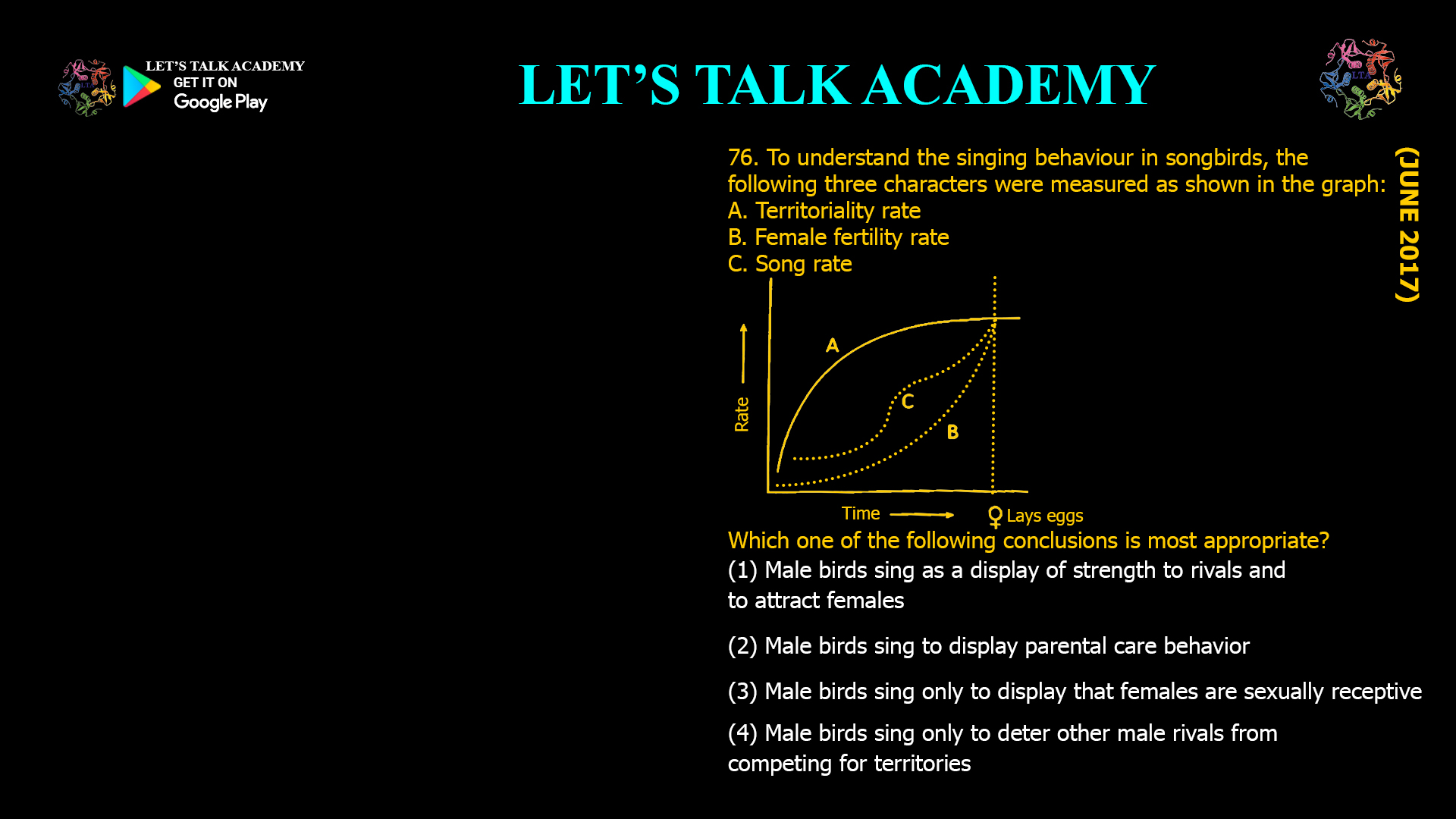- To understand the singing behaviour in songbirds, the following three characters were measured as shown in the graph:
A. Territoriality rate
B. Female fertility rate
C. Song rate

Which one of the following conclusions is most appropriate?
(1) Male birds sing as a display of strength to rivals and to attract females
(2) Male birds sing to display parental care behavior
(3) Male birds sing only to display that females are sexually receptive
(4) Male birds sing only to deter other male rivals from competing for territoriesThe Dual Function of Birdsong
Extensive research shows that male songbirds sing primarily for two interconnected reasons: to display strength to rivals and to attract females. This dual function is supported by both behavioral studies and experimental evidence.
1. Display of Strength to Rivals
Male songbirds are highly territorial, especially during the breeding season. Their songs serve as an audible marker of territory boundaries, warning other males to stay away. Singing can deter rivals by advertising the presence, health, and fighting ability of the territory holder. The complexity, frequency, and amplitude of songs often increase when a rival is nearby or when a territorial challenge occurs. This behavior is known as countersinging and is a well-documented signal of aggression and competitive potential among males.
2. Attraction of Females
At the same time, singing is a crucial part of courtship. Female songbirds use the quality and complexity of a male’s song to assess his genetic fitness, health, and suitability as a mate. A more elaborate or frequent song can indicate that a male is in good condition and capable of providing high-quality genes or resources. During periods of high female fertility, males often increase their song rate to maximize their chances of attracting a mate.
Evidence from Songbird Research
Studies have shown that male songbirds vary their singing behavior depending on social context:
-
Territorial Interactions: Males sing more aggressively and with greater complexity when challenged by a rival. This signals their strength and willingness to defend their territory.
-
Courtship and Fertility: When females are fertile, males increase their song output and may use specific song types or patterns that are particularly attractive to females.
Playback experiments, where researchers broadcast recorded songs in a male’s territory, consistently show that resident males respond more vigorously to songs that signal a strong rival or a high-quality mate. These findings confirm that birdsong functions both as a deterrent to competitors and as an attractant to potential mates.
Why Not the Other Explanations?
Let’s examine the other possible conclusions:
-
Parental Care Behavior: While some birds use calls to communicate with their young or mates during parenting, the primary function of complex song in most songbirds is not to display parental care.
-
Signaling Female Receptivity Only: Singing is not solely about displaying that females are receptive; it is a broader signal used in both competition and courtship.
-
Deterring Rivals Only: Although deterring rivals is a key function, ignoring the role of song in attracting females overlooks half of the evolutionary pressure shaping birdsong.
Conclusion: The Most Appropriate Explanation
The most appropriate conclusion is that male birds sing as a display of strength to rivals and to attract females. This dual-purpose strategy allows males to maximize their reproductive success by both defending their territory and appealing to potential mates
-




1 Comment
Kajal
October 15, 2025Strength to rivals and to attract female